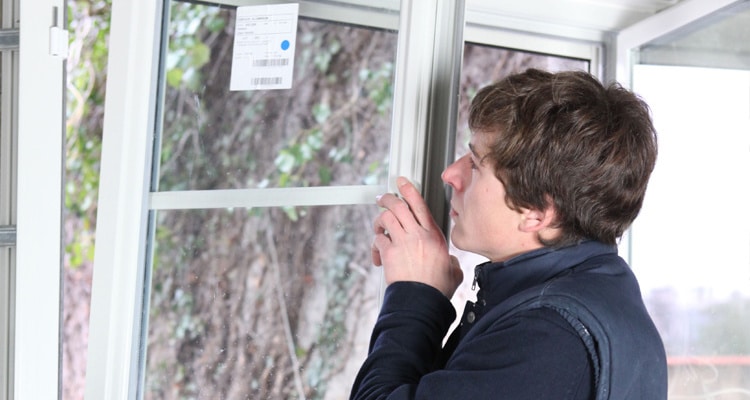Windows play a crucial role in our homes, providing natural light, ventilation, and a connection to the outdoors. However, older windows may pose several problems, such as energy inefficiency, drafts, and noise infiltration. Retrofitting windows is an effective solution to address these issues and improve your home’s comfort and energy performance. This comprehensive guide will walk you through the basics of window retrofitting, the assessment process, the available retrofitting methods, and the cost and energy efficiency considerations.
Understanding the Basics of Window Retrofitting
When upgrading your windows, there are several options to consider. One popular choice is window retrofitting, which involves upgrading the components of an existing window system to improve its energy efficiency and performance. Instead of replacing the entire window unit, retrofitting allows you to enhance the functionality of your windows while preserving their architectural character.
What is Window Retrofitting?
Window retrofitting is a cost-effective solution for homeowners who want to improve the energy efficiency of their homes without the need for a full window replacement. By upgrading the components of your existing windows, such as the glass, frames, and weatherstripping, you can significantly reduce energy loss and enhance the overall performance of your windows.
Importance of Retrofitting Windows
Retrofitting windows offers several benefits. First and foremost, it significantly improves your home’s energy efficiency, reducing heating and cooling costs. Upgrading your windows can minimize air leakage, prevent drafts, and ensure that your home remains comfortable year-round.
Furthermore, retrofitting can help reduce noise infiltration, creating a quieter and more peaceful indoor environment. Whether you live in a bustling city or near a busy road, retrofitting your windows can make a noticeable difference in reducing outside noise.
Additionally, retrofitting can boost the resale value of your property. Potential buyers are increasingly looking for energy-efficient homes, and by retrofitting your windows, you can make your home more appealing to environmentally-conscious buyers.
Moreover, retrofitting is a sustainable choice, contributing to a more eco-friendly lifestyle. By improving the energy efficiency of your windows, you can reduce your carbon footprint and positively impact the environment.
Different Types of Window Retrofitting
Various retrofitting methods are available, each tailored to address specific window issues. The three main types include full frame replacement, insert replacement, and sash replacement. Let’s explore each method in detail below.
1. Full Frame Replacement: This method involves completely removing and replacing the existing window frame with a new one. It is typically used when the existing frame is damaged or deteriorated beyond repair. Full frame replacement allows maximum energy efficiency as it eliminates potential gaps or air leakage.
2. Insert Replacement: Insert replacement involves installing a new window unit into the existing frame. This method is suitable when the frame is still in good condition but the glass or other components must be upgraded. It is a more cost-effective option compared to full-frame replacement.
3. Sash Replacement: Sash replacement focuses on replacing the window’s movable parts, such as the sashes and hardware. This method is ideal for windows with damaged or inefficient sashes. By replacing the sashes, you can improve your windows’ overall functionality and energy efficiency.
When considering window retrofitting, it is essential to consult with a professional to determine the most suitable method for your specific needs. They can assess the condition of your existing windows and provide expert advice on the best retrofitting options available.
In conclusion, window retrofitting is a practical and sustainable solution for improving your existing windows’ energy efficiency and performance. By upgrading the components of your windows, you can enjoy a more comfortable home, reduced energy costs, and a positive environmental impact.
Assessing Your Current Windows
Before embarking on a window retrofitting project, it is essential to assess the condition of your current windows. This step is crucial as it will provide valuable insights into the necessary improvements and help you make informed decisions. By carefully examining your windows, you can identify potential problems and determine the most suitable retrofitting method.
Identifying Problems with Your Existing Windows
When assessing your windows, looking for signs of deterioration is essential. Cracked glass, for example, can not only compromise the visual appeal of your windows but also pose safety hazards. Water leaks are another common issue that can lead to further damage, including mold growth and structural problems.
In addition to physical damage, pay attention to the condition of the window frames. Rotting frames can significantly impact your windows’ overall integrity, reducing their insulation and security effectiveness. Difficulty operating your windows, such as sticking or jamming, may indicate underlying problems that need addressing.
By identifying these problems, you better understand the current state of your windows and can prioritize the necessary improvements. This assessment will help you determine which retrofitting method suits your needs and ensure that you achieve the desired results.
When Should You Consider Retrofitting?
Retrofitting is a viable solution for both older windows in need of improvement and newer windows that do not meet modern energy efficiency standards. If you have older windows that lack proper insulation or fail to provide adequate noise reduction, retrofitting can significantly enhance their performance.
Similarly, even if you have relatively new windows, they may not be as energy-efficient as you desire. Retrofitting can help you save energy and reduce your carbon footprint by improving insulation and reducing heat transfer. By upgrading your windows through retrofitting, you can also increase their lifespan, ensuring they continue serving you well for years.
Retrofitting is a proactive step towards improving your home’s comfort, energy efficiency, and overall value. By taking advantage of modern retrofitting techniques, you can transform your existing windows into highly efficient and functional assets, enhancing your living space’s aesthetics and functionality.
The Retrofitting Process
Step-by-Step Guide to Retrofitting Windows
The retrofitting process typically involves several steps, including:
- Removing the existing window sashes or frames
- Assessing the frame condition and repairing any damage
- Installing weatherstripping to reduce drafts
- Sealing gaps and cracks around the window
- Updating hardware, such as locks and handles
- Installing energy-efficient glass and glazing
- Applying exterior insulation if necessary
- Performing a final inspection to ensure proper installation
Tools and Materials Needed for Retrofitting
Depending on the retrofitting method, you may require different tools and materials. Typical items include a utility knife, pry bar, caulk gun, weatherstripping, insulation, screws, and a reciprocating saw. It is advisable to consult with a professional or supplier to determine the exact requirements for your project.
Choosing the Right Retrofitting Method
Full Frame Replacement
Full frame replacement involves removing the existing window, including the frame and sash, and installing a new one. This method is suitable when the window frame is severely deteriorated or when a significant change in size or style is desired. It provides maximum energy efficiency but entails more extensive work and higher costs.
Insert Replacement
Insert replacement, also known as retrofit or pocket replacement, is a less invasive method for inserting the new window unit into the existing frame. This approach is suitable when the frame is in good condition, and the primary concern is enhancing energy efficiency. Insert replacement offers a relatively quicker installation process and is typically more cost-effective than full-frame replacement.
Sash Replacement
Sash replacement involves replacing only the movable parts of the window, the sashes. This method is suitable when the frames are in good condition but the sashes are damaged or inefficient. It offers improved energy efficiency while preserving the existing frame, making it a cost-effective retrofitting option.
Cost and Energy Efficiency
Estimating the Cost of Window Retrofitting
The cost of window retrofitting varies depending on the chosen method, window size and type, location, and additional features. Generally, full frame replacement is the most expensive option, followed by insert and sash replacements. Obtaining quotes from multiple contractors or suppliers is recommended to compare prices and ensure a fair cost estimate for your project.
How Retrofitting Improves Energy Efficiency
Retrofitting windows can significantly improve energy efficiency by reducing heat transfer and air leakage. Upgrading to energy-efficient glass, such as double or triple glazing, helps prevent heat from escaping during winter and entering during summer. Additionally, adding weatherstripping and properly sealing gaps and cracks improves insulation, minimizing drafts and air infiltration.
By retrofitting your windows, you can enhance the performance of your home, reduce energy consumption, and enjoy increased comfort. Remember to consult with professionals and experts to ensure the best retrofitting solution for your specific needs. With the right method and careful implementation, your windows can become more energy-efficient, functional, and aesthetically pleasing, making your home a more enjoyable.


